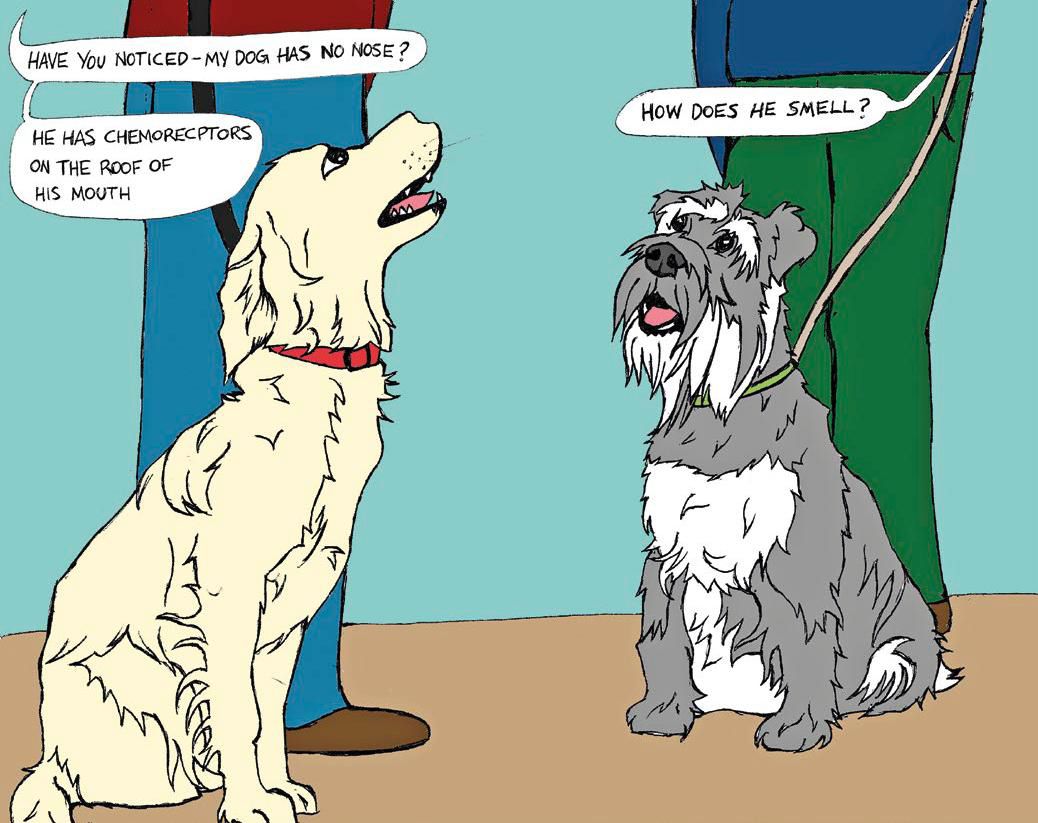
Physiology News Magazine
Alphabetical author order
Letters to the Editor
Alphabetical author order
Letters to the Editor
Mark Cain
https://doi.org/10.36866/pn.101.6
I enjoyed reading Richard Boyd’s interesting piece in the last issue of Physiology News about the origins of The Journal of Physiology’s alphabetical author policy. As one gets older one often tends to get more interested in history, and I am no exception. In doing so I find myself frequently reminded of the well-known French poet’s line that ‘Plus ça change, plus c’est la même chose’
It doesn’t come as a total surprise to see AV Hill – a hero to many physiologists, including me – as a major protagonist in the author order debate. Ernest Starling once described the young Hill as ‘a chap who likes to be in the thick of things – in the scrum!’ The letters Boyd quotes have the authentic ring of Hill. What they also show us is that issues relating to who did what in bits of research, and who got the credit via author order, was a hot topic in the 1920s, just as it is now.
I am, I should say, old enough to have lived through J Physiol’s switch back to NON-alphabetical author order around the turn of the 80s/90s. In fact, I published part of my PhD work in J Physiol alphabetically before the changeover, and another bit a few years later non-alphabetically. At the time, I’m pretty sure I thought alphabetical author order was a curious anachronism. Thirty years on, I’m not so sure.
I can’t recall anyone ever citing a reason for the old alphabetical policy back when I was a mid-1980s graduate student. It was simply one of those physiology quirks, like voting on communications, or the interminable speeches at the dinners, or the custom that woman authors had their Christian names quoted, whilst men were identified by their initials.
There were, though, a fair number of jokes around in 1980s Physiology Departments about the great good fortune of those born with surnames beginning with letters at the front of the alphabet. One view was that having a surname starting with ‘A’ or ‘B’ was worth at least a few extra papers in the hunt for eminence – a kind of corollary to the famous story about David Hubel and Torsten Wiesel that Richard Boyd quotes. Indeed, there is even a letter to Nature in 1970 (Vol 228 p 1357) that describes a statistical paucity in J Physiol (relative to other journals) of authors with surnames beginning with letters in the latter part of the alphabet. The letter writers interpret this, understandably, as alphabetical author order frightening off those with surnames starting with the later letters. I definitely recall being advised to try and publish at least one paper from my PhD work somewhere other than J Physiol, largely to make sure I was first author on something.
Now, scientists are a resourceful folk, and sometimes, creative solutions to the alphabetical author order problem were found.
For instance, I collaborated briefly with an eminent physiologist, whose name began with a fairly early letter of the alphabet, and his PhD student, whose name began with one of the later letters. A year or two later, I spotted a new name on a communication of the eminent physiologist’s; the new name shared the same initials as the PhD student. It turned out the student had more than one family name, and had decided to switch to using a different one. The new choice, interestingly, began with the letter immediately prior to the letter with which the eminent supervisor’s surname began.
Nowadays, of course, we have (sometimes extended) statements on papers about who did what to clarify things. I guess these are an improvement on inferring stuff from author order, which has always been a bit like reading tealeaves. Still, I’m left somewhat envious of those who manage to avoid all the problems inherent in such things by publishing on their own. After all, when did you hear about Albert Einstein having problems trying to explain who was responsible for which bits of the Theory of General Relativity?

